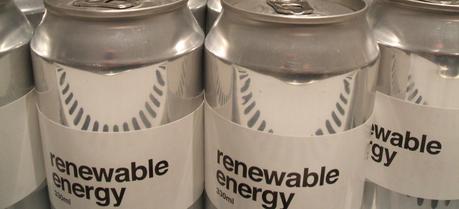 You can't simply put renewable energy into a can. (Credit: Flickr @ La Cinnamon http://www.flickr.com/photos/lacinnamon/)
You can't simply put renewable energy into a can. (Credit: Flickr @ La Cinnamon http://www.flickr.com/photos/lacinnamon/)
The focus of the recently released Technical University of Denmark’s (DTU) International Energy Report 2013 is energy storage. According to the report, one of the greatest challenges in the transition to a non-fossil energy system with a high share of fluctuating renewable energy sources, such as solar and wind, is to align consumption and production in an economically satisfactory manner.
Energy storage technologies can store energy in the form of thermal, electrical, chemical, kinetic or potential energy and return it when needed. Example energy storage methods include subsoil heat, water pumped into high reservoirs, flywheels, batteries and fuel for the transport sector.
When large quantities of fluctuating renewable energy—such as solar and wind energy—have to be incorporated into the energy system, there may be a need for energy storage capacity. This is because electricity from renewable energy technologies is not necessarily produced in step with demand. For example, as one study points out, a growing share of renewable energy can make the electrical grid in Netherlands unstable, as it is already the case in Germany.
Energy storage systems can contribute to grid stability and reliability. Utilities can also employ them to integrate and optimize all types of renewable and distributed energy resources. While the report says that “the investment costs of energy storage are considerable,” it points out that these costs will partly be offset by the ability of energy storage to reduce the cost of upgrading the transmission and distribution infrastructure to keep pace with the expansion of the share of renewable energy.
Despite naming energy storage as the most expensive solution for balancing consumption and production, the report finds that the state of affairs is likely to change as storage costs fall and emphasis on grid stability increases. Storage is also expected to bring the broadest spectrum of benefits—which currently are only partly monetized—to the electricity system as a whole.
Interestingly enough, another recent report on the economics of electricity storage found that “the way to future electricity storage is not clear-cut” and that “there is no universal answer to whether storage is a profitable investment or adds value to a system”.
DTU’s new report on energy storage has therefore attracted much interest—both in Denmark and the EU. Hans Hvidtfeldt Larsen, Vice Dean, and the DTU National Laboratory for Sustainable Energy therefore presented the report in the European Parliament on 12 November. He was extremely pleased with the way the report has been received in both the EU and Denmark:
“If the ambitious EU and Danish goals of using renewable energy as a means of reducing greenhouse gas emissions are to be achieved, there will need to be serious investment in energy storage as one of the cornerstones of the fossil-free energy systems of the future. We have clearly felt, both within the EU and in Denmark, that there is intense interest in advancing technologies for energy storage. Apart from pumped-storage hydroelectricity, which is a modern technology, a great deal of research and development work remains to be done in this area. I sincerely hope we manage to do is within the next 20 years.”

